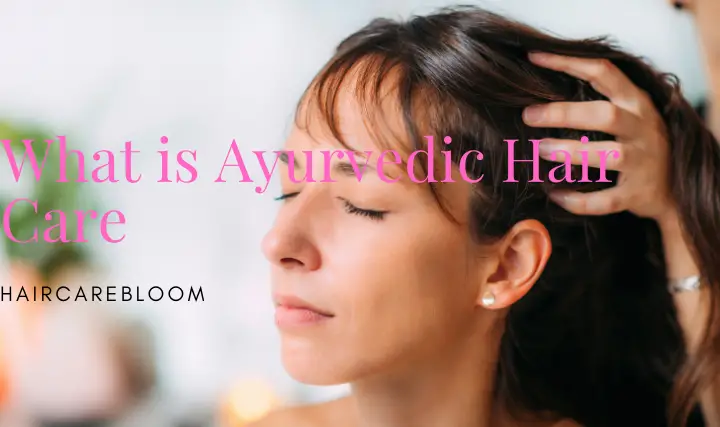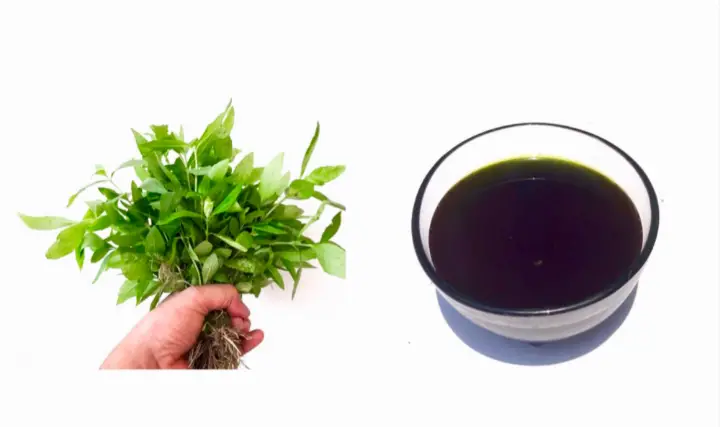It’s no secret that a major component of a woman’s beauty is long, shiny, and well-groomed hair.
If you’ve been to India, you’ve probably noticed that a major percentage of the female population of any age has thick, heavy, and shiny braids.
In India, it is rare to see a woman with a short haircut.
Unlike in European countries, it is more nonsense than the norm.
The main reasons why modern Western women began to cut their hair are hair loss, breakage, cutting, and scalp diseases.
So let’s talk about how to deal with these troubles and grow healthy and beautiful hair.

What is Ayurvedic Hair Treatment
Modern medicine has finally fallen in love and started to use the most adequate wording regarding hair loss – “the cause lies within the body.”
But! The methods of eliminating the problem still leave much to be desired! If you suffer from excessive hair loss, don’t rush to the pharmacy for super-expensive multivitamins.
Ayurveda says that the problem of hair loss lies in an imbalance of Pitta dosha.
Therefore, the treatment of this problem has to start with a Prakriti analysis.
And if Pitta is really imbalanced, one should adjust their lifestyle, food, and habits to the conditions necessary for its harmonization.
Often it is already enough to reduce hair loss.
Hair care according to Ayurveda.
The basic rule in Ayurvedic beauty care is not to put on your body what you can’t eat! Today’s hair and scalp care products are no longer natural or edible.
So take a look at your skincare collection. Typically, dry scalp, dandruff, and hair breakage are the result of chemical exposure.
The best remedy for hair and scalp care is oils. Do not be afraid to use them! Coconut oil, almond oil, and sesame oil are the best oils for nourishing hair.
Do oil masks several times a week, and the result will not make you wait long!

Rules for applying oil masks:
Lightly (just lightly! Hot oil should not be applied to the scalp. This will raise Pitta even more and may exacerbate the problem) heated oil is PULLED on the scalp.
It is very important to pour the oil on the top of the head, allowing it to flow through the hair, reaching the scalp. Then the probability of penetration of the oil into the hair follicles will increase many times.
After the oil has reached the skin, start massaging your head clockwise, moving from the forehead to the back of the head and from ear to ear. Then, dividing the hair into small strands, twitch them, thereby increasing the flow of blood to the hair follicles.
Comb through the hair, starting from the head and moving to the ends. Comb through the hair; you will distribute the remaining oil on the entire length.
Also, Comb your hair from the forehead to the crown, from ear to ear, and from the back of the head to the crown. Brush them until the hair is completely smooth and until you feel a slight tingling sensation on the scalp.
Keep the oil on your hair for half an hour overnight. You do not need to wrap your head in plastic. Allow your head to breathe. Washing the oil mask is best with natural shampoos or at least sulfate-free. And chemical shampoos should be excluded from your life.
Natural shampoos. As a rule, natural ayurvedic shampoos consist mainly of herbs, but they can also include other natural ingredients.
You can buy a ready-made Ayurvedic shampoo, or you can buy individual herbs and mix the composition yourself.
The best herbs for scalp health and for hair growth and strengthening are amla (emblika), rita (ritha) and shikakai. Take these herbs in the ratio of rita – ¼, amla – ½, shikakai – ¼. Pour the dried herbs in cold water and leave for the night.
In the morning, wash your hair with this mixture. Wash your hair with cool water. Hot water may provoke hair loss, as it may cause an imbalance of Pitta.
Try to dry your hair naturally, without using a hair dryer. Don’t be lazy to braid your hair. Untangled hair (even while sleeping) becomes brittle from excessive friction against each other.
And one more tip! Hair, as well as skin and nails, are very fond of polyunsaturated fatty acid Omega-3. So introduce flaxseed and hemp oil, avocados, and nuts into your diet.
There are special Ayurvedic oils for hair, which include various herbs, spices, and even goat milk. Here are the most common ones: Bringaraj taylam, Bringamalakadi, Amla oil, Mahabringaraj, Brahmi oil, Kalindhi taylam.
These oils not only strengthen the hair but also accelerate its growth, prevent the appearance of graying and restore the natural pigment of the hair.
These oil blends use all the same coconut or sesame oil, but herbs and other ingredients enhance the effect.
Conclusion
According to Ayurveda teachings, long, strong hair is given to a woman not only for beauty but also for the ability to be energized by the Moon and Venus.
It is the influence of these planets that makes a woman complete, and she has the strength to be a good wife, hostess, and mother.
The most effective means to maintain the beauty and health of the hair is a complete balanced diet and a healthy lifestyle.
In addition, their care should correspond to their type.
Depending on specific characteristics, Ayurveda distinguishes hair types:
Vata type – coarse, fine, dry. They can be frizzy, and the most frequent problems of this type are related to dry skin. Dandruff may occur;
Pitta type – often straight, thick and strong in youth, but with age, they weaken and thin out, and the scalp becomes prone to greasiness.
People of this type are prone to early graying and baldness.
There can also be problems with the scalp, such as seborrhea or inflammation of the scalp;
Kapha type – Kapha type has the best hair: strong and shiny, often thick, thick, and wavy. The scalp of this type can be prone to greasiness.